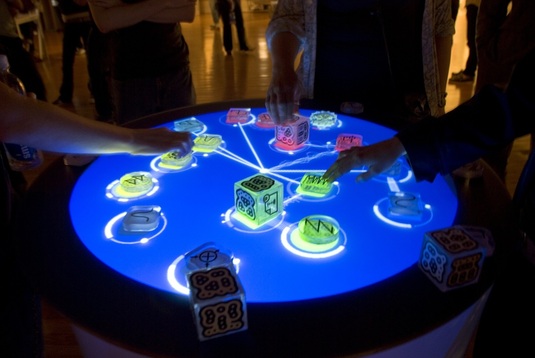|
I would like to talk a little about my new area of study. Coming from computer graphics research it is going to be very fun and challenging to learn the diversity of techniques and subtleties of the field. Human Computer Interaction (HCI) deals with the interface between computers and people. It seeks to understand how humans behave when performing actions and interpreting computer output. At the same time it tries to develop new technologies or paradigms that can be useful to make this communication better. The difficulties arise because we do not understand well how our brain and perception works. What are its limits and capabilities ? Computers operate on a way that is quite different from us and even the most power computer pale in comparison to small prodigies of the human mind. However computers are very useful in many specifics tasks and that is the motivation behind most research in computing. Researchers in HCI generally employ a multidisciplinary approach when trying to devise better interaction models. One can get support from disciplines such as cognitive sciences, ergonomics, graphics design, engineering, ethnography, etc. Designs are also based on different metaphors and ideas. Windowed interfaces, for example, are available in most computers. They are based on discrete visualization areas, that you can move around, open an close, each one associated with a specific document or software. Windows like these only exists on the display and do not really represent anything. They are just abstractions that work really well. Depending on display, you can use a mouse, keyboard or touch screen to interact. Tangible User Interfaces, on the other hand, try to associate information and actions with physical entities. In this way information can have a presence in the real world: you can grab, move, combine it with your hands. This mapping needs not be static and may change depending on the context. There are a couple of really interesting experiments with this idea. Interfaces that are instinctive and employ mappings that are well fitted to the task or situation are called Natural User Interfaces. This approach generally makes use of more advanced techniques such as gesture recognition and head tracking to allow direct manipulation of virtual elements. This is a way to enable the use of our real world knowledge and expectations when interacting with the computer. Human computer interaction is an exciting field that is evolving constantly by new theoretical perspectives, technology developments and a better understanding of the human being. Stay tuned! Quick links:
0 Comments
Leave a Reply. |
Wallace Lages
Assistant professor and entrepreneur. Archives
May 2015
Categories |


 RSS Feed
RSS Feed